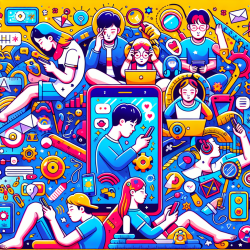The rising prevalence of smartphones has brought both convenience and challenges, particularly for adolescents. Recent research titled Association between Physical Activity, Sedentary Behavior, Satisfaction with Sleep Fatigue Recovery and Smartphone Dependency among Korean Adolescents: An Age- and Gender-Matched Study sheds light on the intricate relationship between smartphone use and various lifestyle factors in Korean adolescents.
The Study's Key Findings
This study highlights the significant associations between smartphone dependency and three primary factors: physical activity (PA), sedentary behavior (SB), and satisfaction with sleep fatigue recovery (SSFR). By understanding these relationships, practitioners can better guide adolescents towards healthier habits.
- Physical Activity: The study found that adolescents with higher levels of smartphone dependency participated less in moderate to vigorous physical activities (MVPA). Encouraging regular PA can be a crucial step in reducing smartphone overdependence.
- Sedentary Behavior: Increased SB time was linked to higher smartphone use. This behavior often correlates with non-learning activities like social media browsing. Reducing SB by promoting active breaks can help mitigate dependency.
- Satisfaction with Sleep: Adolescents who reported poor sleep satisfaction were more likely to be dependent on smartphones. Improving sleep hygiene could be a strategy to address this issue.
Practical Applications for Practitioners
The insights from this study offer valuable guidance for practitioners working with adolescents:
- Create Awareness: Educate students and parents about the impact of excessive smartphone use on physical health and academic performance.
- Promote Physical Activities: Encourage participation in sports or exercise routines that suit individual preferences. Highlight the benefits of regular PA on mental health and academic success.
- Implement Active Breaks: Introduce short, frequent breaks during study sessions to reduce SB time. These breaks can include stretching or brief physical exercises.
- Enhance Sleep Quality: Provide tips for better sleep hygiene, such as limiting screen time before bed and maintaining a consistent sleep schedule.
The Path Forward
This research underscores the need for a holistic approach to managing smartphone dependency among adolescents. By fostering an environment that prioritizes physical activity, reduces sedentary behavior, and improves sleep quality, practitioners can play a pivotal role in shaping healthier lifestyles for young individuals.
If you're interested in exploring this topic further, we encourage you to read the original research paper titled Association between Physical Activity, Sedentary Behavior, Satisfaction with Sleep Fatigue Recovery and Smartphone Dependency among Korean Adolescents: An Age- and Gender-Matched Study.










